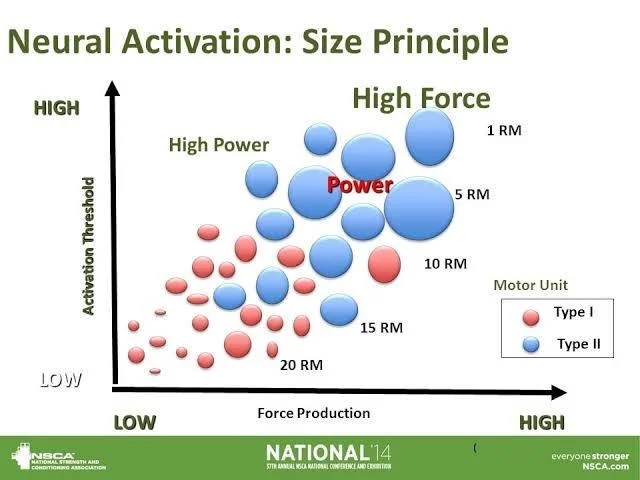The Weight Room is Calling
Winter is coming. The best place to weather the storm may be in the weight room.
The off-season is an opportune time to build or rebuild strength. Strength is the amount of force that can be produced and transferred to push (a pedal) or pull an object. Over the course of the cycling season and without maintenance weight training, strength can decline up to 25%. While your functional threshold power may be going up, it is likely due to improved muscular metabolic machinery (mitochondria) and cardiovascular adaptations, and not to strength gains.
Pedaling your bike, even up steep hills, does not provide ample stimulus to build strength. The load per pedal stroke may feel “hard”, but given that it may be repeated thousands of times during a ride, it does not reach the critical threshold to build strength. Furthermore, heavy endurance training load, which can lead to glycogen depletion, both suppress the signal for increased strength.
The off-season allows time to rebuild the machine! Strength gains can be achieved through hardware and software upgrades. Some theorize that hardware (big muscles) is for show and software is for go.
To understand the roll of strength training on upgrading the hardware, let’s talk about some of the proteins involved. Figure A below depicts how the muscle fiber contractile proteins, myosin and actin, are organized within Z lines to produce a functional unit, called a sarcomere. Figure B is a brilliant illustration to demonstrate how myosin hands (called heads) grab onto actin (forming a cross bridge). It is easy to imagine myosin hands pulling actin towards the midline to shorten the distance between the Z bands (sarcomere).
The Sliding Filament Theory of Muscle Contraction
By: Jacob L. Krans, Ph.D. (Dept. of Biology, Central Connecticut State University) © 2010 Nature Education
Citation: Krans, J. L. (2010) The Sliding Filament Theory of Muscle Contraction. Nature Education 3(9):66
Strength training hardware upgrades occur through protein synthesis of actin and myosin to increase the cross-sectional area of the muscle (hypertrophy). Simply stated, there are more hands to do the work. Hypertrophy occurs in all fibers (slow and fast twitch); however, fast twitch fibers have a greater potential for growth. This works out well, since fast twitch are also the first to atrophy (lose cross-sectional area) during the cycling season.
Strength gains are also made through upgrades in software, represented by our central nervous system (CNS). These are the gains seen initially in the first several weeks of weight training. In order to understand the software upgrades, let’s quickly touch upon two ways in which force can be increased.
Strength training can increase force through the following software (signal) upgrades:
1. Recruitment. A motor unit is defined as a motor neuron and all the muscle fibers it innervates. When the brain sends a signal to a motor neuron to contract a muscle, all of the fibers in that motor unit are activated. This is referred to as the all-or-none principle. Realize that NOT all motor units in a given muscle are recruited for sub-maximal efforts, only ALL the fibers within a motor unit. This gives us the ability to grade our force. Recruitment of motor units is based on Henneman’s size principle, which states motors units are recruited from smallest to largest. Size refers to two things: 1) the size of the motor neuron cell body, and 2) the number of fibers in the motor unit. Neurons with small cell bodies innervate slow twitch fibers, typically 10-200 fibers per motor unit. Neurons with larger cell bodies innervate fast twitch fibers, typically 500-2000 fibers per motor unit. Fast twitch fibers produce more force but are less efficient than slow twitch.
Strength training increases the ability to recruit more motor units for a stronger contraction through greater neural drive. Strength training also improves synchronization of recruitment so there is less division in the timing of recruiting slow twitch (Type I) and fast twitch (Type II) fibers. Cyclists benefit from increased neural drive and synchronization of recruitment for sprint acceleration, improved ability to snap out of corners and surge to attack.
2. Increased firing rate (summation of twitches). A nerve impulse (twitch) will signal all the fibers in that motor unit to contract. When the firing rate is slow, the muscle fibers generate low force. This has to do with calcium transients. As the twitch rate increases, the force increases as the cross-bridges do not have time to relax (more calcium hanging around). With rapid firing rate, maximal force is reached (calcium has allowed more cross-bridges to form within the fiber). This is another way in which we grade force. Strength training increases the software to deliver more rapid firing, which gives a cyclist more force per contraction as more cross-bridges per fiber are formed.
How do I upgrade my hardware and software?
Acquiring more hardware is achieved by lifting lighter weights with greater repetitions to create a stimulus for hypertrophy (muscle cross-sectional area). Increasing strength through software upgrades (central nervous system) can be achieved through lifting heavier weights and fewer repetitions, creating greater muscle fiber recruitment. The balance between these basic types of lifting prescriptions changes based on: 1) athletic age of the athlete (how long have they been strength training), 2) injuries or imbalances, 3) phase (off-season, base, build, peak, maintenance), 4) type of lift (primary, secondary, accessory) and 5) goal of strengthening.
This is where I find working with a Certified Strength and Conditioning Coach to be really helpful. Please visit the Community Partners page for information on Drafter Strength Training classes at Digman Fitness. Plans are easy to find on line, but the one that is right for you likely requires a more personalized approach.
Phases of strength training mirror the periodized phases of training on the bike with transition/off season, phase, base, building, peak/race. All phases of strength training involve primary, secondary and accessory lifts.
Primary lifts include multi-joint and larger muscle groups. These compound lifts require the most coordination, and therefore place the biggest load on the neural system (software). Examples include squat (front and back), Romanian dead lift (RDL) and lunge/split squat. Examples of push and pull compound lifts for the upper body include bench press and rows. In general, primary lifts will be done at a higher percent of one rep max (%1RM) with less reps and more sets compared to secondary lifts (roughly the same total number of lifts).
Secondary lifts reinforce those movement patterns, but are done with slightly lower load and more variation in stance, for example single leg or split stance. Examples include Bulgarian split squat (BSS), step-up or step-downs, hip thrusts, Nordic hamstring curls and goblet squats. Upper body secondary lifts might include dumb bell rows, bicep curls and tricep extensions.
Accessory lifts are designed for stabilization and are typically done with low load, high reps, short rest with a focus on control. Examples include glute bridges, single leg RDL, calf raises, banded monster walks, core (planks, dead bugs) and scapular stability (Y-T-W raises).
The off season or transition phase may be very dissimilar between cyclists. For the cyclist with strength as a limiter, or an athlete who has never engaged in weight training, or coming off of an injury, a block of hypertrophy focus may be recommended. The goal is to build hardware and teach proper form with moderate loads, RPE 6-7. Rest is relatively short. This will translate into a foundation from which to build strength.
Phase: Off-season/Transition
The base phase of strength training emphasizes max force and neural software upgrades through much higher loads (RPE 7-9), and therefore less reps (roughly half compared to the hypertrophy protocol), and more rest (nearly double). This will translate into increased peak torque for climbing and sprinting, and a foundation for explosive power.
Phase: Base
During the build and peak phases, explosive lifts and plyometrics are introduced. Strength training focuses on the rate of force development, or power, emphasizing the fast concentric phase rather than time under tension of the eccentric phase. Loads remain high as in the base phase, but reps and sets are reduced. This provides a stimulus for maintenance without building fatigue. Core exercise should remain a staple of all phases.
Phase: Build, Peak
During the competitive season, a maintenance phase is employed. Strength training may drop to one time per week, limited to 2 compound lifts, functional training to maintain mobility, and core. This is enough stimulus to preserve strength hardware and software.
The numbers make my head spin, but if you understand strength upgrades, and the purpose of lifting throughout the various phases of training, the reps and sets make sense. I hope. Strength coaches may have a very different approach to the general guidelines noted above. Be sure to know why you are lifting as that will guide how you are lifting.
Stay strong and lift responsibly.







